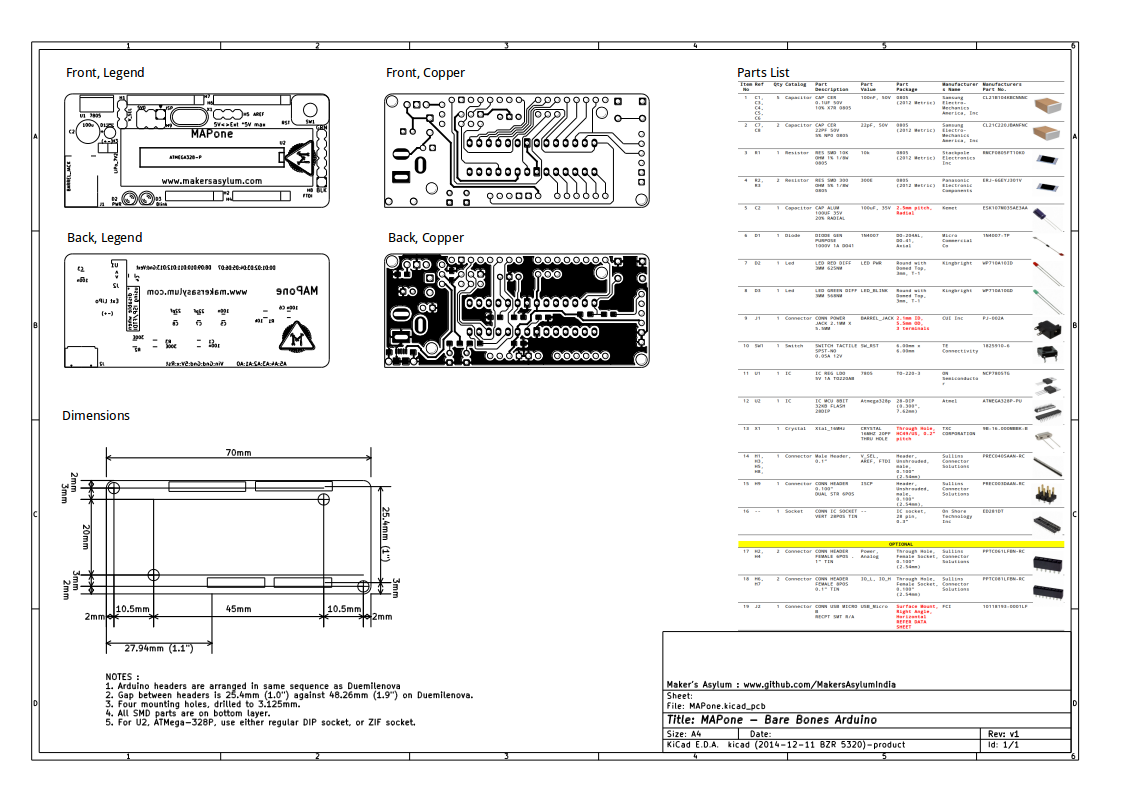MAPone
basic, bare bones, cheap, Arduino clone to help support Makers' Asylum maker space in Mumbai, India
basic, bare bones, cheap, Arduino clone to help support Makers' Asylum maker space in Mumbai, India
To make the experience fit your profile, pick a username and tell us what interests you.
We found and based on your interests.
MAPone running a servo
MAPone running the Blink sketch
Build instructions are quite straight forward, and the board can be assembled within an hour by anyone with basic soldering skills. To that end, we have also got about 10 SMD parts that go on the board - just so you can hone your SMD skills. These are all 0805 components, three resistors and seven capacitors, all on the back side of the board. Assembling the rest of the parts should be quite simple. The video provides a walk through of the design and assembly process.
Parts list and board details. PDF of this file is available in the git repo.

NOTES:
Create an account to leave a comment. Already have an account? Log In.
Become a member to follow this project and never miss any updates